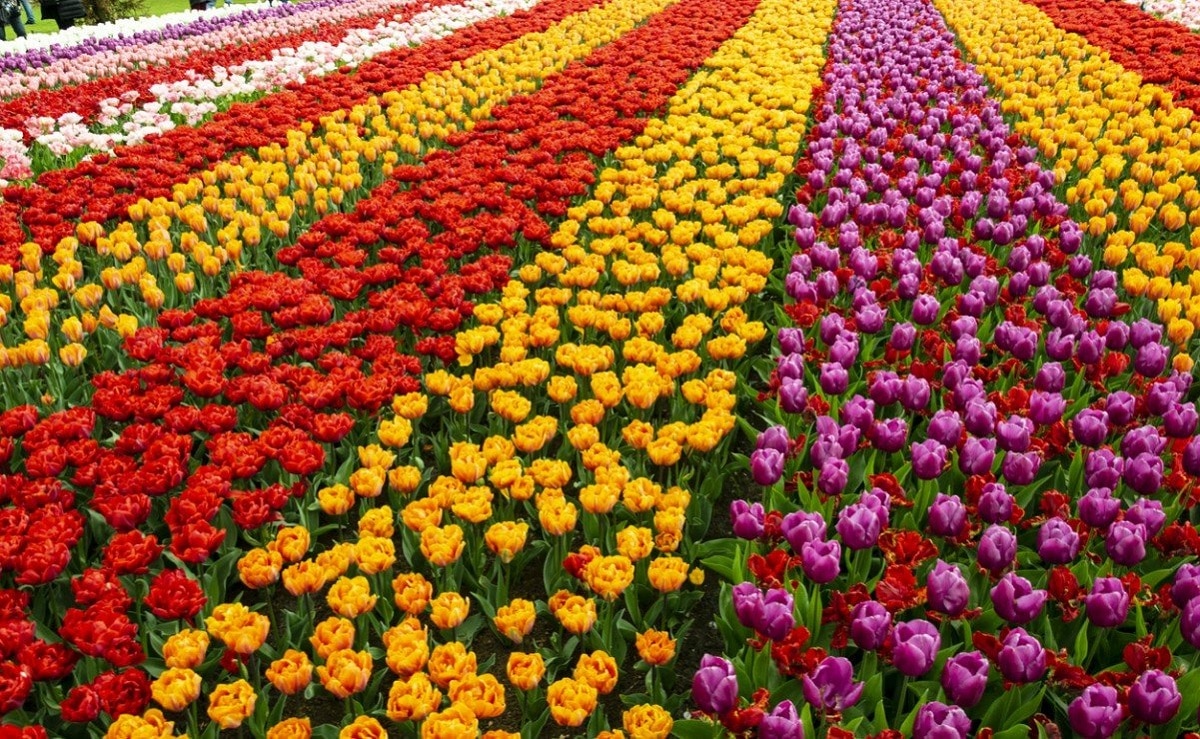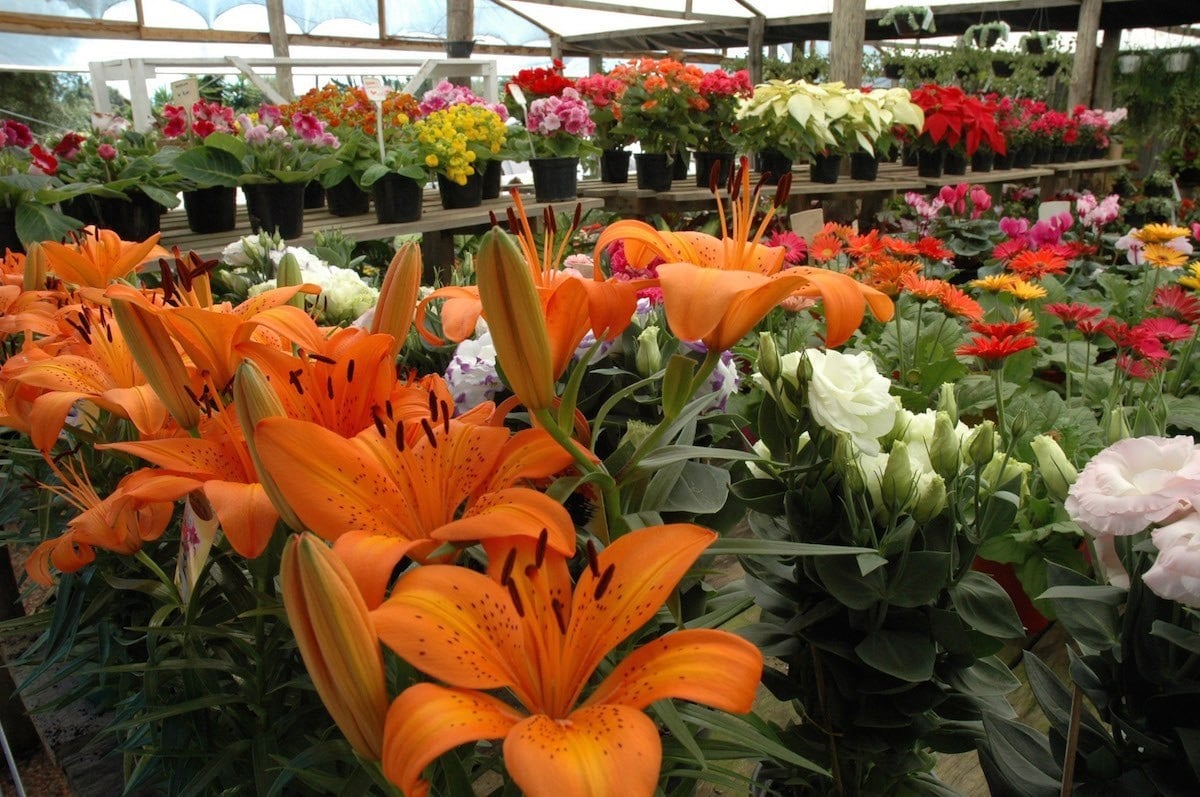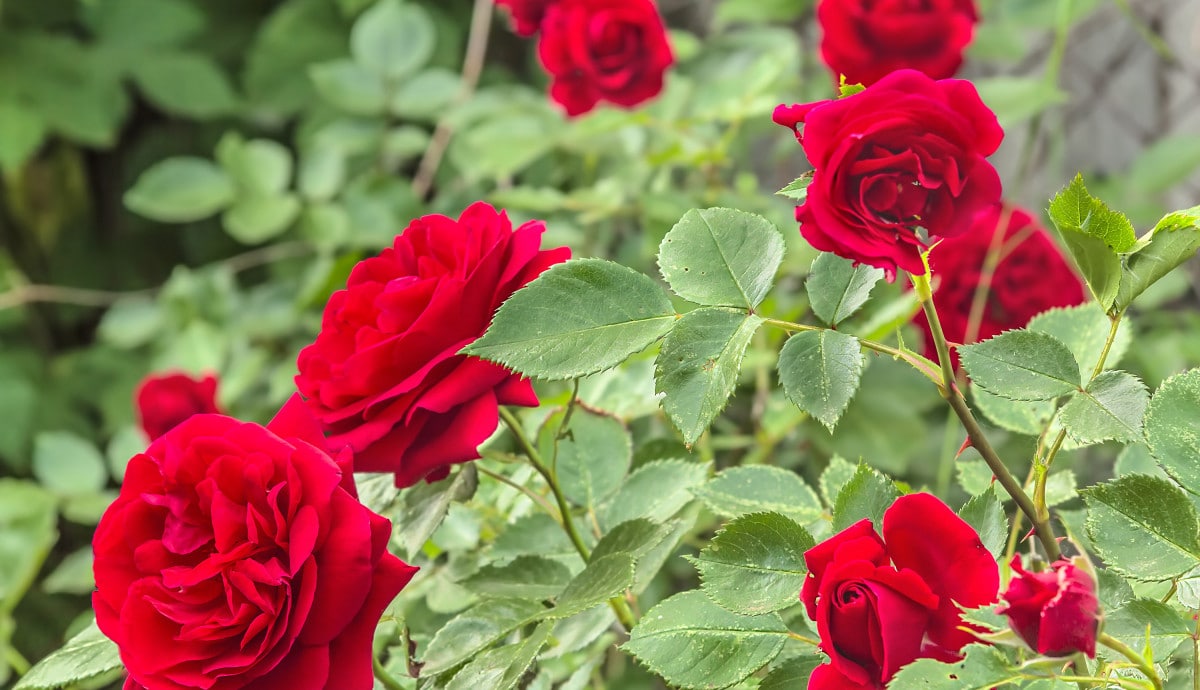
A roughly floriculture is the art of developing flowers for decorative purposes through industrial mechanisms. What is the difference between floriculture and gardening? Or is it the same?
If you want to know more about floriculture, in this article we will explain a little more about this topic.

Floriculture is the part of horticulture dedicated to the cultivation of flowers and ornamental plants., mainly for decorative purposes. This is a broad area of knowledge that includes activities such as the production of garden plants, the production and marketing of cut flowers, landscaping, interior decoration, and more.
It differs from gardening in that flower growers do on a large scale, while gardeners do it in a specific area. In such a way that, in most cases, gardeners can take advantage of the products produced by flower growers. Floriculture involves the practice of cultivation techniques to obtain useful flowers for marketing. Depending on the particularities of each species, they can also be used for medicinal or industrial purposes. For example, hair products with rose extract, aloe vera...
However, it is not based solely on the finished product (the flower itself), but also considers the basic or intermediate elements that dominate the scene. Among them we can mention seeds, bulbs, pots with special properties, fertilizers, etc.
Features
The practice of floriculture involves a number of characteristics that are designed to distinguish it from other cultivation techniques. Among these we find:
Quantity of final product. It works for quantity and quality. This means that it implies a lot of production, but that it does not affect the good characteristics of the flower.
- Uniform floral features. This condition makes all the flowers produced very similar phenotypically (size, color, etc.)
- Process adjustment. Flower cultivation has always been understood as an artisanal concept, but in this case it is industrial.
- Condition setting. This process allows the cultivation conditions to be adjusted to ensure that the harvest occurs at the expected time. In this way, the flowers are available all year round.
- Workplace. Mainly, it is developed in greenhouses prepared according to the specific conditions of each species.
- Distribution system. As production increases, so does distribution, and due to the internationalization of production, non-native species can be purchased.
- Price. The more it is produced, the more it influences the price of flowers. Since they get cheaper prices, especially for local purchases with hardly any logistics costs.
Floriculture processes
The treatment of all these questions is considered a very specific process with different stages:
- Plantation. It develops by sowing seeds or cuttings, depending on the type of flower in question.
- Crop cycle. Each species takes a certain amount of time to develop and grow to be ready for sale. Much depends on the use that is given to the flower at this stage, since it can be cut or ornamental. In the latter case, it is sold to nurseries, for example, people buy them to put in pots.
- Use of pesticides and other chemical products. Many species of flowers are prone to pests and diseases. Especially in the case of the former, interest can be generated as the bright colors attract many insects. However, care must be taken to protect the environment from harm.
Varieties produced according to the final objective
- Plants for flowerbeds. such as petunias, sage, primroses, pansies, etc.
- The most common is to use cut flowers, this includes the most common varieties such as roses, carnations, lilies, chrysanthemums, etc.
- Flowering plants for potted end use: Geranium, jasmine, rosebush, azalea or orchid, among others. Bougainvillea is developed to support decoration, and species such as green radish and croton are included here.
Floriculture in the World

If we take into account that floriculture is carried out on a large scale, it is logical to think that this has some degree of impact on the level of world imports and exports.
The first thing you should know is that the development of this practice is happening in some countries. The main floriculture potentials are Holland, Colombia and Kenya.
Regarding imports, the main markets for cut flowers are the United States, the countries of the European Union and Japan. All this has triggered a great buying and selling activity in the industry, drawing the attention of countries like Cuba that want to be included. Note that, within the main flowers that lead this market, the most traded are undoubtedly the roses.
Floriculture is a professional activity and must be carried out by professionals in the area. Although this is a very flashy and low-risk task, due precautions must be taken to avoid inconvenience. I hope this article has been useful to you.